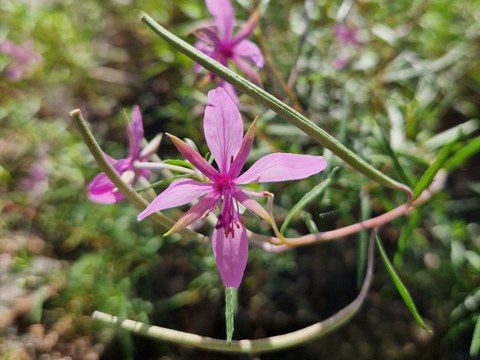Previous plants of the week - The willowherb
Genus Epilobium Dill. ex L.

Die Lippenblüten von Satureja montana L. erscheinen ab etwa August an den vierkantigen Stängeln mit den lineal-lanzettlichen Blättern.
The willowherb (genus Epilobium)
Botany knows about 200 species of willowherb. With the exception of some tropical regions, they colonize the whole world. The upright or creeping herbs or semi-shrubs are annual or perennial.
Probably the best-known representative in the native flora is the narrow-leaved willowherb(Epilobium angustifolium L.). In the Botanical Garden, it can be found in the evening primrose family in the plant systematics. Christian Konrad Sprengel (1750 - 1816), the founder of flower ecology, discovered the principle of cross-pollination when studying its flowers.
First, the male stamens of the flower release their pollen. As the pollen grains are connected with adhesive threads, each nectar-seeking insect is "loaded" with a large amount of pollen. Only later does the stigma of the flower open to receive pollen. This proterandry effectively prevents pollination by self-pollen within the flower. Interestingly, it can be lost in the high mountains: Due to the weather, pollinating bumblebees and moths are less active there, and self-pollination then guarantees seed set.
The four-columned fruit capsules of all willowherbs contain many tiny seeds, which are gradually caught by the wind. Each seed has an umbrella of long hairs and floats away - often for many kilometers. As willowherbs successfully colonize open spaces, they are considered pioneer plants.
The gravel willowherb (Epilobium fleischeri Hochst.) and the rosemary willowherb (Epilobium dodonaei Vill.) bloom in the Botanical Garden's Alpinum.
(WEEK 36)
